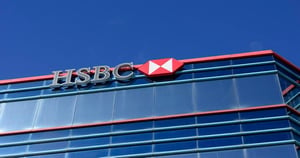Gold prices advanced strongly on Monday, lifted by escalating trade friction between two of the world’s largest economies. Investors are increasingly seeking protection amid renewed geopolitical strain, with the precious metal reclaiming its traditional role as a safe haven. Market sentiment turned defensive following news that the United States is preparing to reimpose tariffs on a range of Chinese goods, intensifying concerns over global supply chains and economic stability.
The price of spot gold climbed to its highest level in over a week, underscoring the sensitivity of the metal to macroeconomic uncertainty. As equities wobbled and the dollar softened slightly, gold caught a bid, with traders positioning for prolonged volatility in global markets. The looming risk of retaliatory action from China is further complicating an already fragile international trade environment. Investors now view gold not just as a hedge against inflation, but as insurance against diplomatic unpredictability.
India, one of the world’s largest consumers of physical gold, also reported a surge in local demand amid the uncertainty. While Indian buyers traditionally purchase gold for cultural and seasonal reasons, recent currency weakness and tariff speculation have spurred renewed retail and institutional interest. This combination of rising demand and global unease is giving upward momentum to bullion prices, with analysts forecasting further gains if trade rhetoric continues to intensify.
Gold’s resilience is particularly notable in the face of higher interest rate expectations, which typically dampen appetite for non-yielding assets. However, the current climate is not one of conventional economic logic. Investors are weighing the prospect of slower global growth and currency instability against the nominal benefits of holding interest-bearing instruments. In such an environment, the intrinsic security of gold becomes more attractive than ever.
Market participants are also eyeing central bank policies for cues. Several major economies are facing complex trade-offs between managing inflation and sustaining growth. Gold, unburdened by credit risk or political allegiance, offers a neutral asset amid these crosscurrents. With central banks themselves among the biggest buyers of gold in recent quarters, the market is witnessing robust demand from both public and private sectors.
Technical indicators are also flashing bullish signals. Support levels have held firm, and price action suggests that momentum is building for a possible breakout. While short-term fluctuations remain likely, the structural case for gold remains intact. The asset is finding renewed favour as portfolio insurance, particularly in an environment where political decisions can reshape economic landscapes overnight.
As investors reassess their exposure to risk assets, gold continues to reclaim its stature as a strategic allocation. The metal’s performance in recent sessions reinforces its role not merely as a defensive tool, but as a proactive hedge against systemic stress. Whether tariffs materialise or not, the shift in investor psychology towards caution is likely to linger, offering continued tailwinds for bullion.
Cora Gold Ltd (LON:CORA), together with its subsidiaries, explores for and develops mineral projects in West Africa. The company primarily explores for gold deposits. Its flagship project is the Sanankoro Gold project located in the Yanfolila Gold Belt, Southern Mali.


































